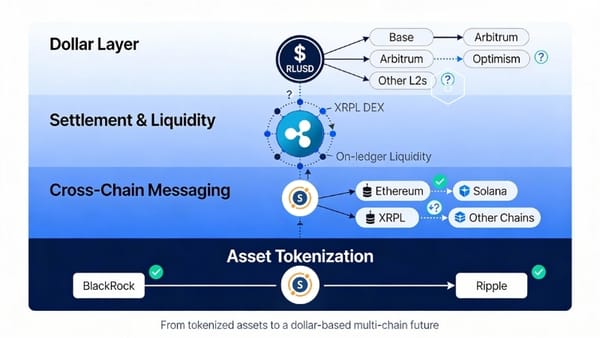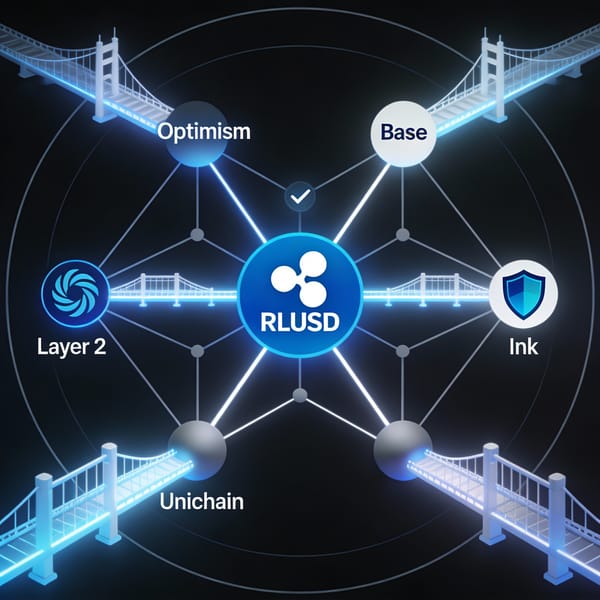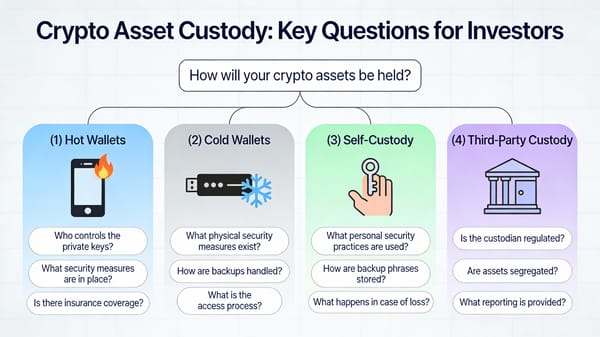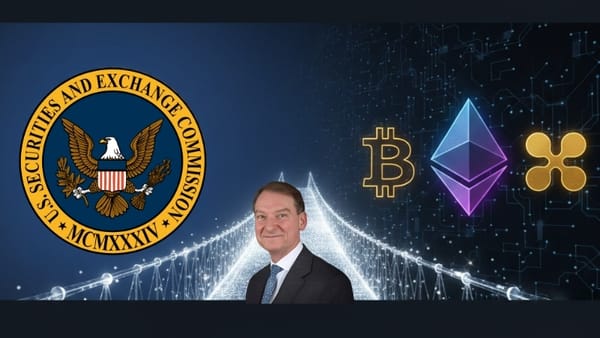The Archaic Financial Rails: Why Moving Money Still Takes Days (And How Blockchain Can Fix It)
While we can stream movies instantly across continents, sending money internationally still relies on 50-year-old technology. Here's how blockchain is finally modernizing our financial infrastructure.
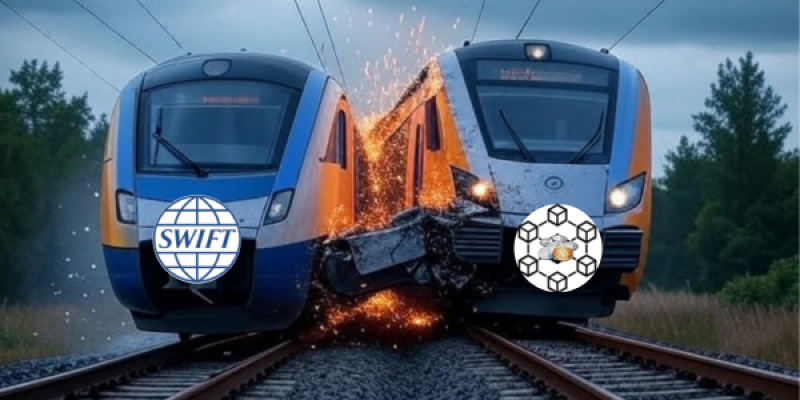
Imagine trying to send an email that takes three days to arrive, costs $25 to send, and might get lost along the way. You'd think the system was broken, right? Yet this is exactly how our global financial system works today when moving money across borders or even between different banks.
While we can stream movies instantly across continents and video chat with someone on the other side of the planet in real-time, sending $1,000 from New York to London still relies on technology and processes that haven't fundamentally changed since the 1970s. This isn't just inefficient—it's economically damaging and exclusionary to billions of people worldwide.
The Creaking Infrastructure of Global Finance
SWIFT: The 50-Year-Old Backbone
At the heart of international money movement sits SWIFT (Society for Worldwide Interbank Financial Telecommunication), a messaging system created in 1973. Think of SWIFT as the postal service for banks—it doesn't actually move money, but rather sends secure messages between financial institutions about money transfers.
When you wire money internationally, here's what actually happens:
- Your bank receives your transfer request
- SWIFT messaging carries instructions through a network of correspondent banks
- Multiple intermediary banks process and verify the transaction
- The receiving bank finally credits the recipient's account
This process typically takes 3-5 business days and costs anywhere from $15-50 per transaction, with additional fees often hidden in poor exchange rates.
The Correspondent Banking Web
International banks don't all have direct relationships with each other. Instead, they rely on "correspondent banking"—essentially a web of partnerships where banks maintain accounts with each other to facilitate cross-border transactions.
Nostro and Vostro accounts form the foundation of this system:
- Nostro account: "Our account with you" - money Bank A keeps deposited at Bank B
- Vostro account: "Your account with us" - money Bank B keeps deposited at Bank A
These accounts must be pre-funded with billions of dollars sitting idle across the global banking system. It's estimated that banks worldwide have over $27 trillion locked up in these dormant correspondent accounts—money that could otherwise be put to productive use.
Stock Trading: The T+2 Settlement Lag
Even domestic stock trading suffers from outdated infrastructure. When you buy 100 shares of Apple stock, the transaction appears to complete instantly on your phone app. In reality, it takes two full business days (T+2) for the trade to actually "settle"—meaning the shares officially transfer to your account and the money officially transfers to the seller.
This delay exists because:
- Clearinghouses must verify and match all trades
- Custodian banks must physically move securities registrations
- Multiple intermediaries each add processing time and fees
During these two days, your money is essentially frozen, and various parties along the chain collect fees for processing and risk management.
The Hidden Costs of Financial Friction
This antiquated system creates massive hidden costs:
For Individuals:
- International remittances (money sent home by workers abroad) cost an average of 6.2% in fees
- Cross-border transactions can take up to a week
- Currency exchange spreads often add 2-4% in hidden costs
For Businesses:
- Supply chain payments are slow and expensive
- Working capital gets trapped in lengthy settlement cycles
- Small businesses often can't access efficient cross-border payment solutions
For The Global Economy:
- An estimated $120 billion annually is lost to payment inefficiencies
- Billions of people remain excluded from the formal financial system
- Innovation is stifled by regulatory complexity and high barriers to entry
Enter Web3: A New Financial Operating System
Web3 represents a fundamental reimagining of how financial systems could work. Instead of relying on intermediaries, Web3 uses blockchain technology to create programmable, trustless networks where transactions can be verified and settled automatically.
Blockchain: The Trust Machine
Think of blockchain as a shared, tamper-proof ledger that everyone can see but no one can alter dishonestly. Instead of requiring trusted intermediaries like banks to verify transactions, blockchain networks use mathematics and cryptography to ensure accuracy and prevent fraud.
Key advantages:
- 24/7 operation: No business hours or holidays
- Near-instant settlement: Transactions complete in seconds or minutes
- Transparency: All participants can verify the system's integrity
- Programmability: Smart contracts can automate complex financial operations
XRP Ledger: Purpose-Built for Payments
XRP and the XRP Ledger were specifically designed to solve the inefficiencies of traditional cross-border payments. Here's how it works:
Traditional International Payment: Your Bank → Correspondent Bank 1 → SWIFT Network → Correspondent Bank 2 → Correspondent Bank 3 → Recipient's Bank Timeline: 3-5 days, Cost: $25-50
XRP-Enabled Payment: Your Bank → XRP Ledger → Recipient's Bank Timeline: 3-5 seconds, Cost: $0.0002
XRP serves as a "bridge currency"—instead of banks needing to maintain nostro/vostro accounts in every currency they want to support, they can convert any currency to XRP, transfer it across the XRP Ledger, and convert to the destination currency. This eliminates the need for trillions in pre-funded accounts.
Ripple's Network Effect
Ripple, the company that created XRP, has built RippleNet—a network of over 300 financial institutions using blockchain technology for cross-border payments. Major banks like Santander, American Express, and Standard Chartered have integrated Ripple's solutions to offer faster, cheaper international transfers.
The network creates powerful advantages:
- Liquidity pooling: Instead of each bank maintaining separate nostro accounts, they can share liquidity
- Real-time settlement: Payments complete in seconds rather than days
- Reduced counterparty risk: Blockchain eliminates the need to trust multiple intermediaries
Beyond Payments: Web3's Broader Vision
Decentralized Finance (DeFi)
DeFi platforms are recreating traditional financial services without traditional intermediaries:
- Automated market makers provide instant currency exchange
- Lending protocols offer programmable loans and deposits
- Decentralized exchanges enable 24/7 trading without intermediaries
Tokenization of Assets
Web3 enables "tokenization"—converting real-world assets into digital tokens that can be traded instantly:
- Real estate can be divided into tradeable shares
- Stocks and bonds can settle instantly rather than T+2
- Commodities can be traded globally without physical movement
Central Bank Digital Currencies (CBDCs)
Many central banks are exploring digital versions of their currencies that combine the stability of government-backed money with the efficiency of blockchain technology.
The Road Ahead: Challenges and Opportunities
Regulatory Evolution
The recent passage of the GENIUS Act in the United States represents a watershed moment, creating the first federal framework for stablecoins (blockchain-based dollars backed by real reserves). SEC Chairman Paul Atkins' "Project Crypto" initiative signals a shift from regulatory hostility to active support for blockchain innovation.
Technical Maturation
Blockchain networks are rapidly improving:
- Scalability solutions are processing thousands of transactions per second
- Energy efficiency has improved dramatically with new consensus mechanisms
- User experience is becoming as simple as traditional financial apps
Institutional Adoption
Major financial institutions are no longer asking "if" they'll adopt blockchain technology, but "how quickly" they can implement it:
- JPMorgan has processed over $300 billion through its JPM Coin blockchain system
- Visa is settling transactions using stablecoins
- SWIFT itself is exploring blockchain integration
The Future of Money Movement
We stand at an inflection point in financial history. The current system—built for a world of paper checks and telephone calls—is giving way to a new paradigm built for the digital age.
This transformation isn't just about making payments faster or cheaper (though it does both). It's about creating a more inclusive, efficient, and transparent financial system that serves everyone, not just those wealthy enough to access traditional banking.
The question isn't whether this change will happen—it's already happening. The question is whether traditional financial institutions will adapt quickly enough to remain relevant, or whether entirely new players will capture the value being created.
For consumers and businesses alike, the promise is clear: a world where moving money is as easy as sending a text message, where financial services are available 24/7 to anyone with an internet connection, and where the true cost of financial services is transparent rather than hidden in layers of intermediary fees.
The financial rails that have carried us for the past fifty years are finally being rebuilt for the digital century. The transformation has begun.
